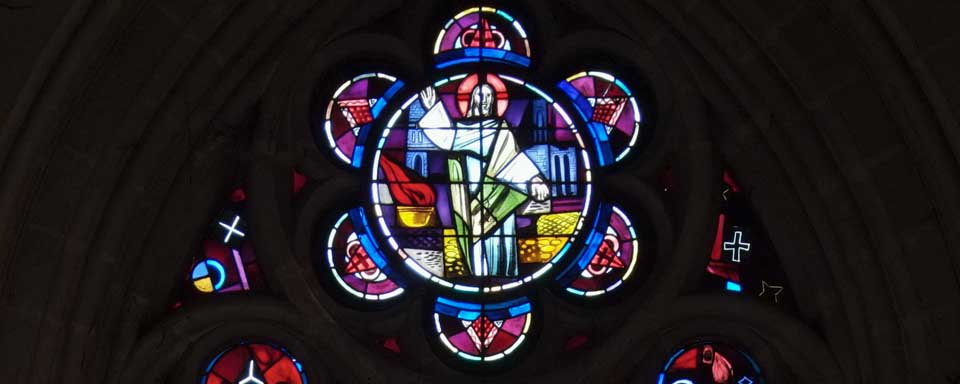What awaits us after death? Hell, purgatory, heaven? Here are three teachings given for All Saints’ Day 2023 by don Paul Denizot, rector of the Montligeon sanctuary in partnership with the YouPray app.
Purgatory
According to number 1030 of the Catechism of the Catholic Church: “Those who die in the grace and friendship of God, though assured of their eternal salvation, undergo after death a purification to obtain the holiness necessary to enter the joy of heaven.” The Catholic Church thus affirms the existence of a purification stage called purgatory. Purgatory is presented as a time of purification and preparation for the joy of heaven. Purgatory is neither a place nor a physical state, but rather an inner transformation. It represents a psychological and personal time, when each soul has its own purification time.
Purgatory is presented as a relationship with Christ, a relationship of love, justice, mercy and purification. It is emphasized that this purifying relationship can already be experienced on earth, notably through the trials and purifications that each person may encounter in his or her life. The prayers and actions of the living can help souls in purgatory, even after death.
Hell
The Catechism of the Catholic Church in number 1022 reminds us: “Every man receives in his immortal soul his eternal retribution as soon as he dies in a particular judgment that refers his life to Christ, either through purification, or to enter immediately into the bliss of heaven, or to damn himself immediately forever.”
The Church reminds us that we cannot be united with God unless we freely choose to love him, since love always presupposes a free decision on the part of the loved ones. So if the Lord offers us his love, we are free to accept or refuse it. This is why the Church has always affirmed the existence and eternity of hell. She didn’t invent it.
In the Gospels, Jesus regularly speaks of the Gehenna of fire, a place where the fire does not go out, where the worm does not die. Hell is the rejection of God, closing in on oneself, rejecting God’s love and relationships with others.
Hell is the rejection of God and self-enclosure
Refusing a relationship with God is possible because God never forces us to love him. We therefore have the possibility of refusing him, and hell is the eternalization of sin, that is, of the voluntary refusal of God. At death, hell is the result of sin and the refusal to love to the end. This is a requirement of both justice and God’s love. Hell is terrible. We can’t wish it on anyone.
Paradise
The Catechism of the Catholic Church emphasizes that those who die in God’s grace live eternally with Christ, resembling God and seeing him face to face. Heaven is described as a reality beyond our comprehension, filled with joy and communion with God. Biblical images such as paradise, the feast, the mountain of Yahweh and the heavenly Jerusalem are used to evoke this heavenly reality. The difficulty lies in representing the sky, for it is beyond our imagination.
However, we sometimes already experience something of eternal life here on earth, notably through experiences of communion, love and sharing. These moments give us a foretaste of heavenly life. Eternal life consists in knowing God and living in loving communion with him.
We can pray for sinners, asking the Virgin Mary to transform them and bring them back to God. Prayer for the deceased in purification is also encouraged. In this way, we forge bonds of love with our deceased loved ones and continue to accompany them on their journey towards the presence of God.
Prayer for the dead
Purgatory and the practice of praying for the dead have always been present in the Church. Belief in the possibility of helping the dead goes back to the history of mankind, and Christian revelation confirms this. Witness the Book of Maccabees, where Judas offers a sacrifice for the soldiers who died in the war. Christians have been praying for the dead since ancient times, and the Church Fathers regularly encouraged this practice. Even today, Pope Francis stresses the importance of burying the dead and praying for them, seeing it as an act of mercy.
How to help the deceased
There are many ways to help the deceased during their purification period. We can pray for them, offer Masses for them, and in particular pray the rosary, entrusting them to the Virgin Mary. However, the greatest and most beautiful prayer is the mass, where Christ offers himself to his Father and we offer the sacrifice of the cross, thus making present and offering to the Father the sacrifice of Christ accomplished 2,000 years ago. This is the most beautiful prayer, for it is that of Jesus offering humanity to his Father.
Montligeon has a special tradition: the perpetual mass celebrated daily for living and deceased members recommended to the Fraternité Notre-Dame de Montligeon. This tradition began in 1884 with the founding of the Oeuvre de Montligeon. It continues to this day.
If you would like to recommend a living or deceased person to the fraternity, simply visit the Montligeon website (montligeon.org). It’s an act of love to entrust them to the fraternity and ask for its prayers on their behalf.

